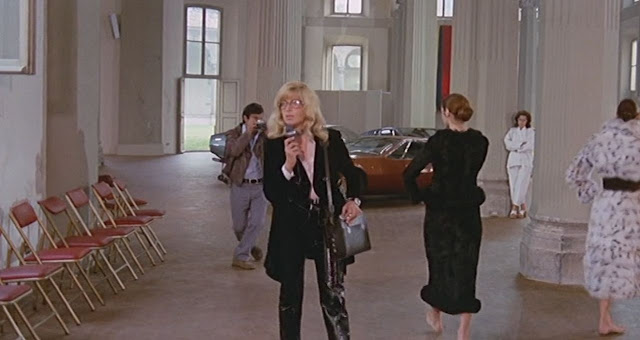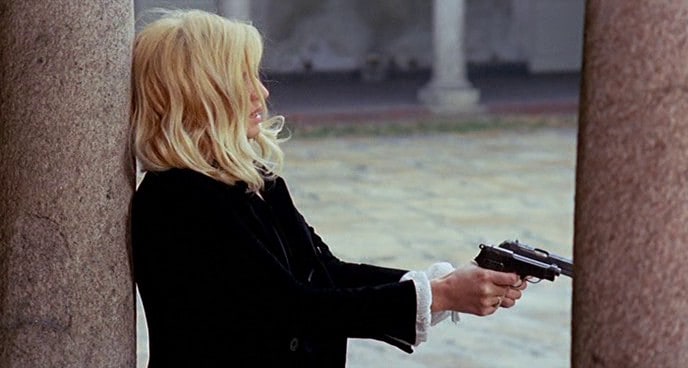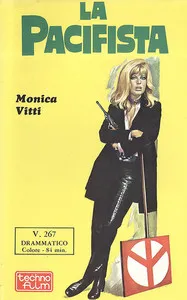The death of Monica Vitti has resulted in numerous accounts of her career, typically centred on her films with Antonioni, or rather the first four of them. The Cocteau adaptation, The Mystery of Oberwald (Il mistero di Oberwald 1980), seems to have been forgotten or maybe not seen at all by the critics writing the eulogies. Shot on video, experimenting with colours, it remains a fascinating piece in the Antonioni filmography. Still, it is not unreasonable to focus on the four films they made together in the sixties. The same period when Miklós Jancsó had his breakthrough. The Italian director was one of his major influences, and it’s reported that he watched and studied La Notte (1961) numerous times.
Not surprisingly, Antonioni’s influence would be eminently visible in Jancsó’s sophomore work, Cantata (Oldás és kötés1963). Incidentally, one of many English translations of his films that has no resemblance to the original title. When Jancsó refined his style, the impact of the L’Avventura director would be less evident. In 1969, the Hungarian director made his first film outside his native country, called Sirokkó. He made what would become the first of five films in Italy the subsequent year. All of them were scripted by Giovanna Gagliardo. Only two of those were co-scripted by Gyula Hernádi, which may be one of the reasons why the Italian period is not regarded as Jancsó’s strongest.

La Pacifista– Smetti di poivere (1970) was the first of Jancsó’s offerings made in Italy. The story revolves around Barbara (Vitti), a journalist assigned to cover extremist movements. Some of the members set fire to her car. She gets involved with a counter-revolutionary (Pierre Clementi) with whom she will have a weird relationship. He was seemingly stalking her, but she refuses to identify him to the police. The plot is still hardly the most pivotal thing here. There are two different versions available where the plotlines are not identical. This is Jancsó’s first film set in the present since the above-mentioned Oldás és kötés, and his last before Season of Monsters (Szörnyek évadja 1987).
Monica Vitti in a glass house.
The director of cinematography is Carlo Di Palma, who lensed Antonioni’s two first colour features. Even though the style from earlier Jancsó films is present, the influence of the Italian master is clearly visible. The architecture of Barbara’s apartment with its huge windows, giving the appearance of an aquarium, is a prominent example. The blocking of several scenes brings Antonioni to mind as well. On the other hand, typical traits of the director of The Conversation, (Fényes Szelek 1969), are present, like the ritual way of using weapons and the constant power shifts. When it comes to thematics, it’s consistent with Jancsó’s earlier films, and certainly nowhere near the disastrous Zabriskie Point, made by Antonioni the same year.

Vitti is dubbed in at least one of the versions available. Her performance is vital in a film with more standard dialogue than usual in a Jancsó film. The film is constantly engrossing, even if the songs feel cheesy and tacked on. The original score by Giorgio Gaslini is not on Deep Red (Profondo rosso 1975) level but is still serviceable. The most famous (some would say infamous) of Jancsó’s Italian films remain Private Vices, Public Virtues (Vizi privati, pubbliche virtù 1975). Still, La Pacifista is one of the strongest films he made in Italy, only bettered by The Tyrant’s Heart (A zsarnok szíve 1981). One of the Italian works co-scripted by the above-mentioned Hernádi.
La Pacifista is not the highlight of Vitti’s or Jancsó’s career. Even less so for Daniel Olbrychski, who is not even credited for his role. He would, however, appear in three later films by the director with full credits.

